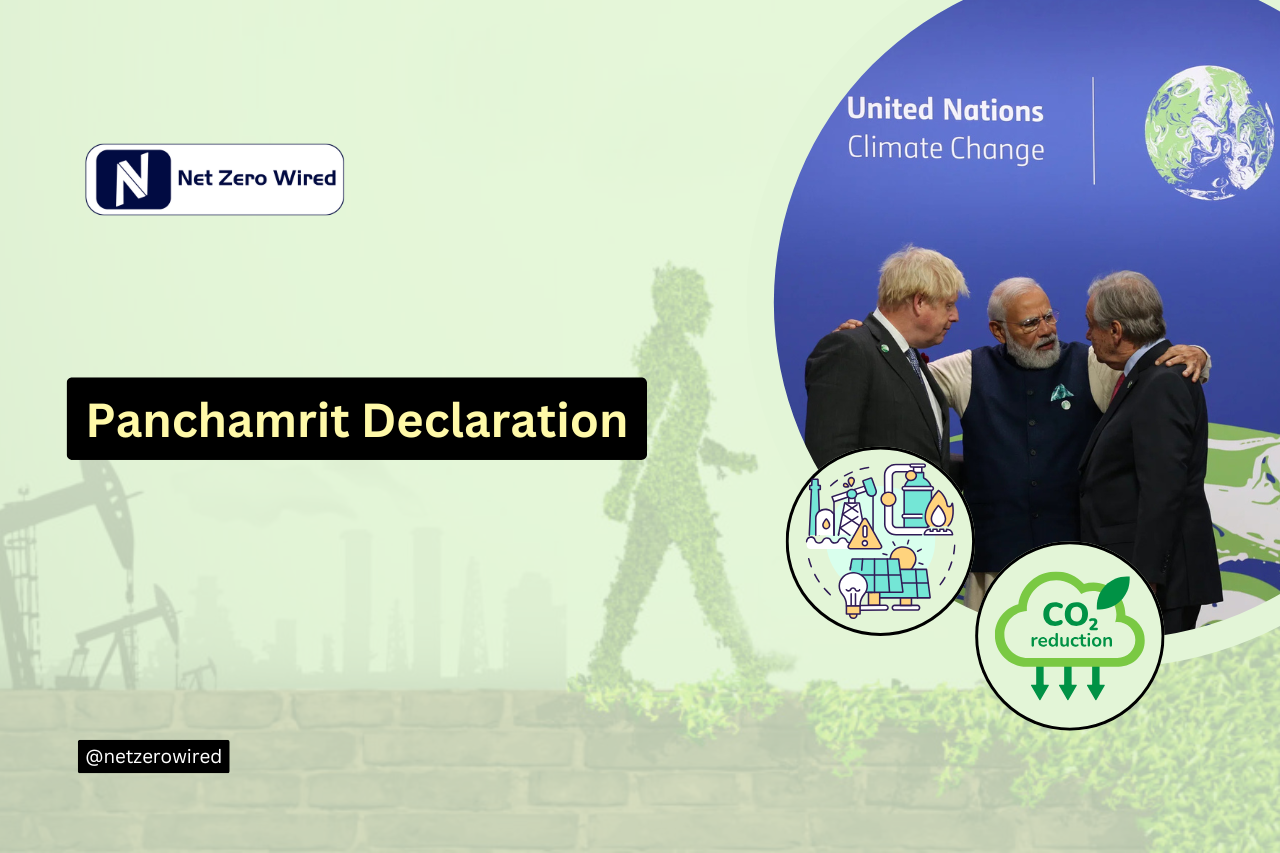
Panchamrit Declaration: India’s Bold Climate Action Plan
At the COP26 summit in Glasgow in 2021, Indian Prime Minister Narendra Modi announced the Panchamrit Declaration, a landmark climate action plan outlining India’s commitment to combating climate change. The strategy lays out five ambitious targets India aims to achieve by 2030, with a long-term goal of reaching net-zero emissions by 2070. The name Panchamrit, meaning “five nectars” in Sanskrit, reflects the five major goals India has set for its energy transition and climate action.
As a major global economy, India’s climate commitments are essential in global efforts to mitigate the effects of climate change. The Panchamrit Declaration marks a significant step toward sustainable development, energy security, and environmental responsibility.
Achieving 500 GW Non-Fossil Fuel Energy Capacity by 2030
India’s first goal under the Panchamrit Declaration is to increase its non-fossil fuel energy capacity to 500 gigawatts (GW) by 2030. Currently, non-fossil fuel sources account for about 156 GW of India’s total installed capacity, which exceeds 400 GW. Achieving 500 GW will require a massive increase in renewable energy sources like solar, wind, and hydropower.
This shift toward renewables is crucial for reducing India’s dependence on coal and fossil fuels, which dominate its energy mix. The transition will not only cut emissions but also reduce the cost of energy, as renewable energy prices are falling globally. However, challenges such as building the necessary infrastructure—like smart grids and energy storage systems—remain. A supportive regulatory framework is also key to attracting private investment and innovation in renewable technologies.
Meeting 50% of Energy Needs Through Renewable Sources by 2030
The second major goal is driven by economic growth and population expansion, this is an ambitious target. To achieve it, India is focusing on expanding its solar and wind energy sectors.
- Renewable Energy Target: India aims to fulfill 50% of its energy demand through renewable sources by 2030, a challenging goal given its rapid economic growth and population expansion.
- Solar and Wind Expansion: India is focusing on expanding its solar and wind energy sectors to achieve its renewable energy target, leveraging its global leadership in solar and exploring the potential of offshore wind.
- Benefits of Renewable Energy: By prioritizing renewable energy, India can reduce its reliance on fossil fuel imports, strengthen energy security, lower costs, and mitigate the risks of climate change.
Reducing Carbon Emissions by 1 Billion Tons by 2030
India has pledged to reduce its total projected carbon emissions by 1 billion tons by 2030. This is a significant target for a country that is among the world’s top greenhouse gas emitters. The reduction will be achieved through a combination of energy efficiency measures, expansion of renewable energy, and advances in carbon capture and storage (CCS) technologies.
Key strategies include improving energy efficiency in industries and transportation, supported by programs like the Perform, Achieve, and Trade (PAT) scheme. Electric mobility is another focus area, with the adoption of electric vehicles (EVs) and public transportation expected to contribute significantly to emission reductions. While India’s EV market is growing, more infrastructure support, such as charging stations and government incentives, will be needed to scale up the transition.
Reducing emissions will not only enhance India’s global leadership in climate action but also result in cleaner air, improving public health, and reducing healthcare costs associated with pollution.
Lowering Carbon Intensity of the Economy
India’s fourth goal is to lower the carbon intensity of its economy by 45% from 2005 levels by 2030. Carbon intensity refers to the amount of carbon dioxide emissions per unit of GDP. This goal reflects India’s commitment to decoupling economic growth from carbon emissions, demonstrating that sustainable development is possible.
- Decarbonization of Industries: Decarbonizing sectors like steel, cement, and manufacturing is crucial for India’s renewable energy goals. This involves adopting cleaner technologies and improving energy efficiency.
- Green Finance: Green finance, including green bonds and international partnerships, will be essential to fund low-carbon projects and support India’s decarbonization efforts.
- Sustainable Growth and Job Creation: Lowering carbon intensity will drive sustainable growth and create new jobs in renewable energy, energy efficiency, and green infrastructure sectors.
Achieving Net-Zero Emissions by 2070
The final and most significant goal of the Panchamrit Declaration is to achieve net-zero emissions by 2070. This means that by this time, India aims to balance the amount of greenhouse gases it emits with the amount removed from the atmosphere. Achieving net zero will require a complete transformation of India’s energy, transportation, and industrial sectors.
A key component of this transformation is the rapid shift to renewable energy and reducing fossil fuel consumption. Additionally, India will need to focus on carbon sequestration through afforestation, reforestation, and carbon capture technologies. Achieving net zero will require substantial international cooperation, especially in areas like technology transfer and climate finance.

